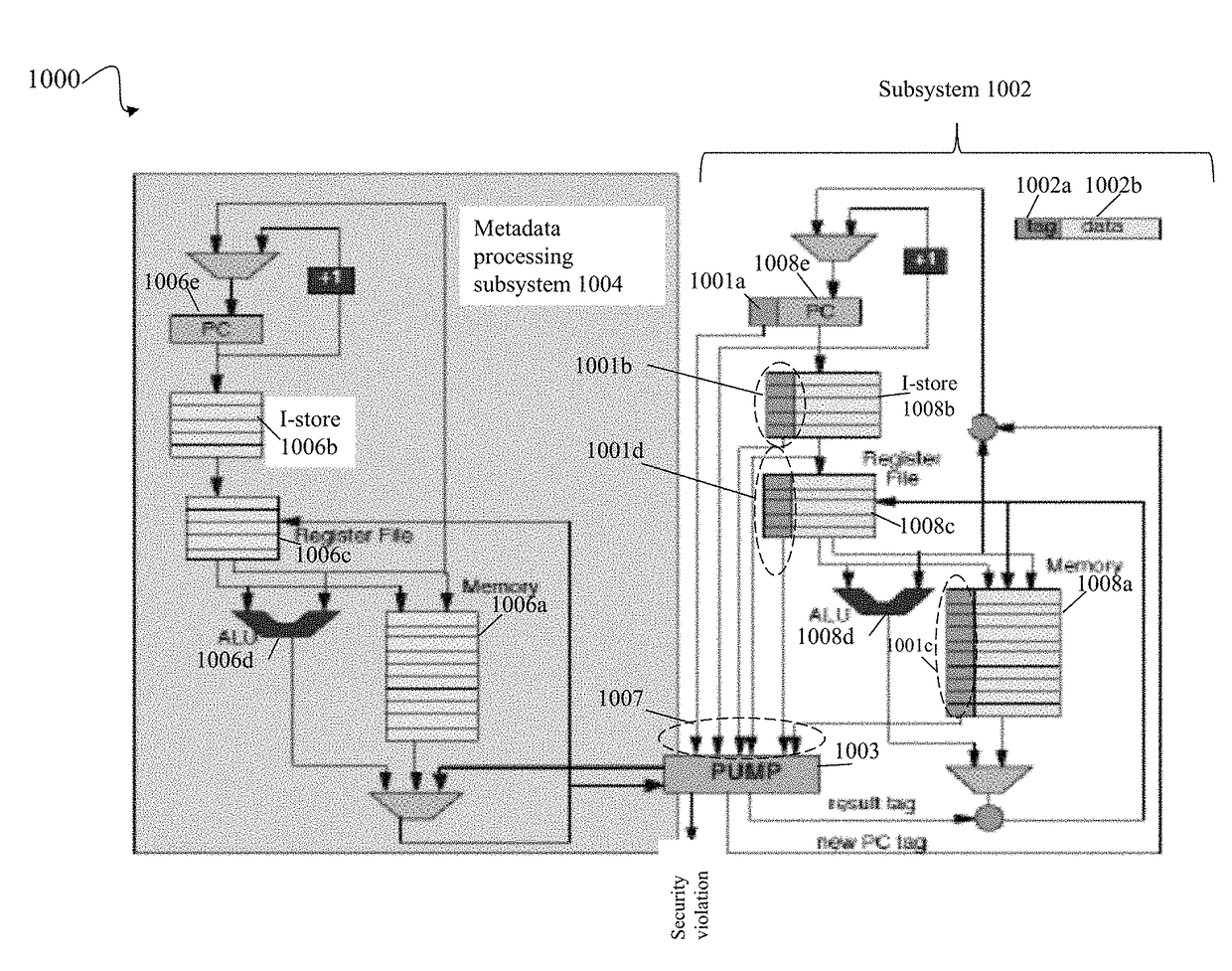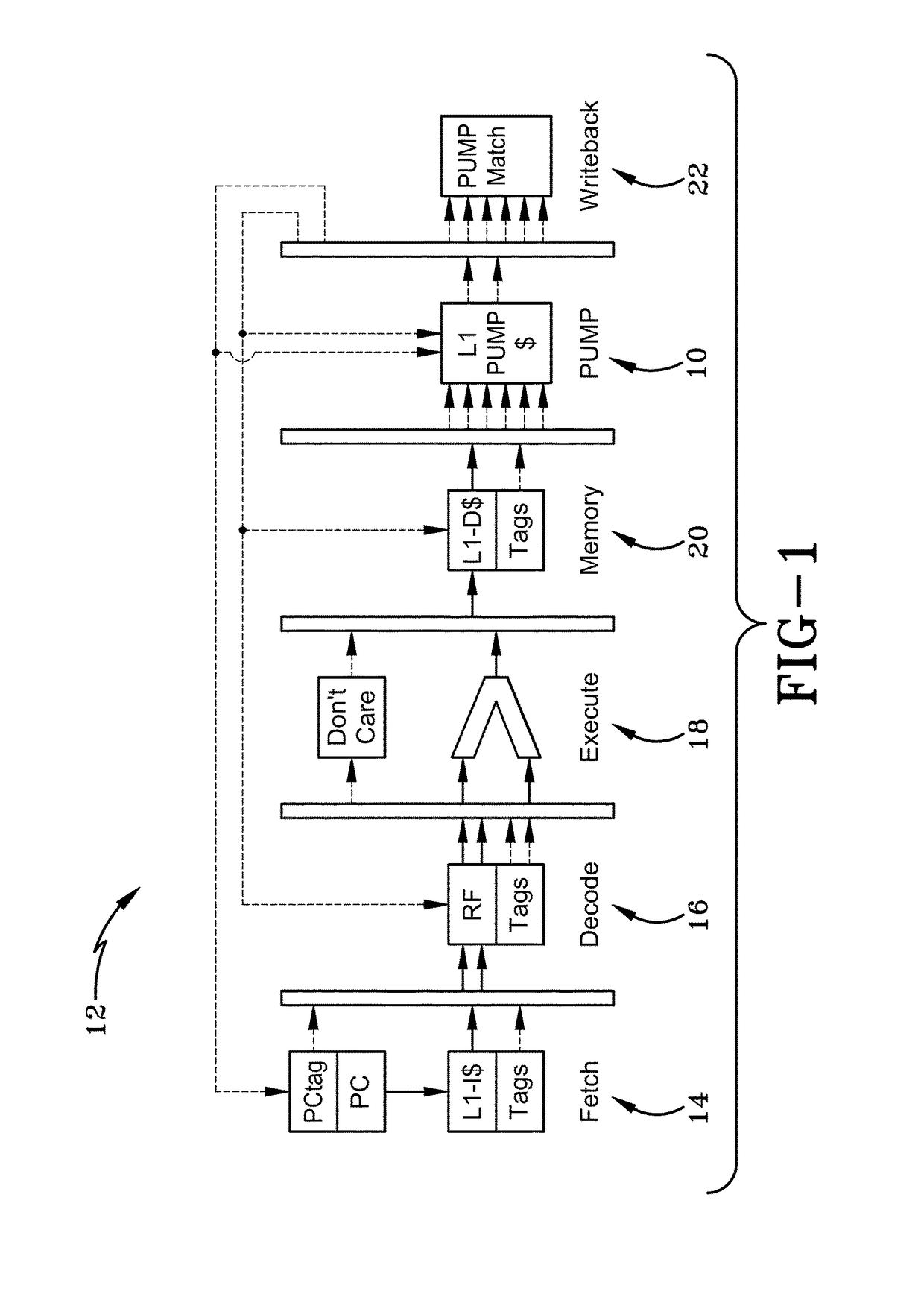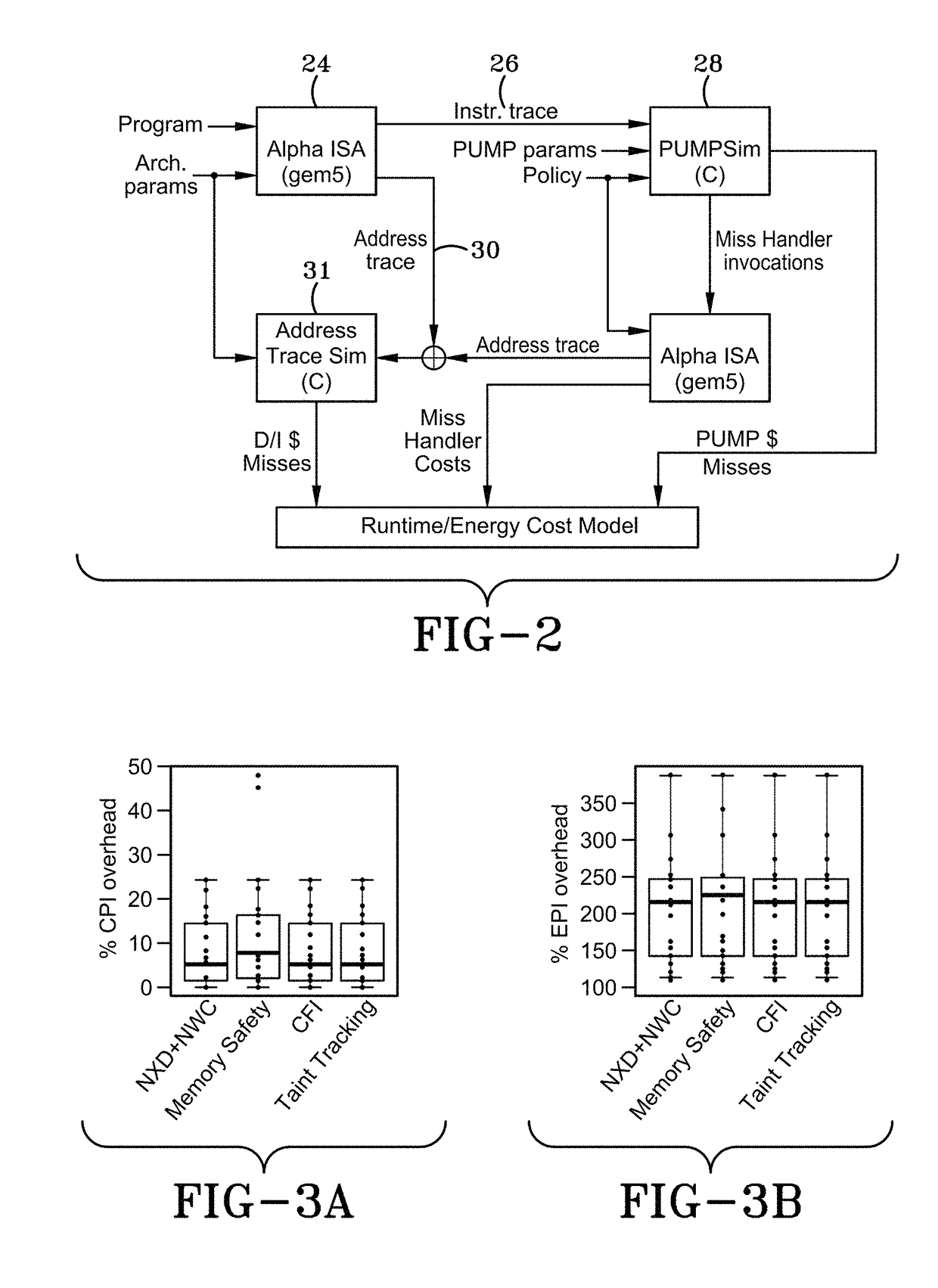Techniques for metadata processing
a technology of metadata and processing, applied in the field of data processing, can solve the problems of requiring more than memory safety and isolation, unable to fully secure the system, and the cost of enforcing airtight abstractions is often deemed too high, so as to achieve the effect of minimal overhead and quick adaptation
- Summary
- Abstract
- Description
- Claims
- Application Information
AI Technical Summary
Benefits of technology
Problems solved by technology
Method used
Image
Examples
first embodiment
[0200]Consistent with discussion elsewhere herein, the PUMP may be characterized as a rule cache for SDMP. There may be a mapping between a set of tags on the instruction and instruction inputs and tags for the result of the operation. Tag processing is independent and parallel from the normal operations of the instruction. In at least one embodiment, the PUMP runs in parallel with the normal RISC-V operations, supplying the tags for the results of the operation. Since the PUMP is a cache, rule cache misses occur the first time the PUMP receives a particular instruction, and thus a particular corresponding set of PUMP inputs (e.g., compulsory) or when the PUMP was unable to retain a rule in cache (e.g., capacity of cache exceeded therefore the rule was evicted from the rule cache, or perhaps conflict). Rule cache misses cause a miss trap that is then handled by code of a miss handler system (e.g., rule cache miss handler). Inputs may be communicated to the miss handler through PUMP ...
second embodiment
[0457]In a second embodiment, rather than use special instruction tags, an embodiment may use colored pointers with rules of the memory safety policy triggered by execution of particular instructions, such as the load and store instructions. The loader may tag pointers of malloc and free that reference malloc metadata portions 1102a, 1104a and 1106a with the color red. Code of malloc may include store instructions that, when executed, trigger rules that perform coloring such as in the example 1110. Code of free may include store instructions that, when executed, trigger rules that reinitialize or deallocate a malloc metadata portion (e.g., 1102a, 1104a and 1106a) or a previously malloced memory block (e.g., 1102b, 1104b and 1106b) such as by retagging a memory cell with a tag F representing free memory. The memory safety policy may include rules triggered by execution of particular instructions, such as the load and store instructions, whereby the rules only allow access to malloc m...
PUM
 Login to View More
Login to View More Abstract
Description
Claims
Application Information
 Login to View More
Login to View More - R&D
- Intellectual Property
- Life Sciences
- Materials
- Tech Scout
- Unparalleled Data Quality
- Higher Quality Content
- 60% Fewer Hallucinations
Browse by: Latest US Patents, China's latest patents, Technical Efficacy Thesaurus, Application Domain, Technology Topic, Popular Technical Reports.
© 2025 PatSnap. All rights reserved.Legal|Privacy policy|Modern Slavery Act Transparency Statement|Sitemap|About US| Contact US: help@patsnap.com



